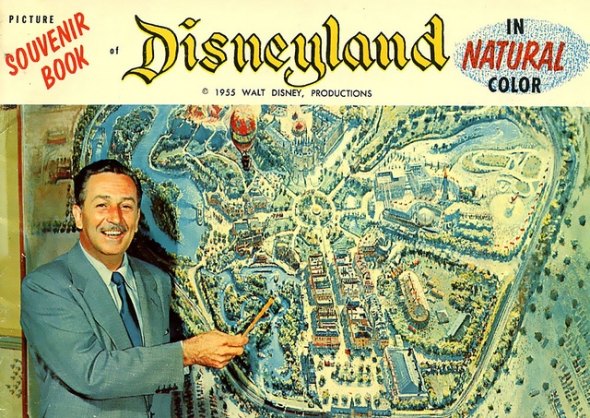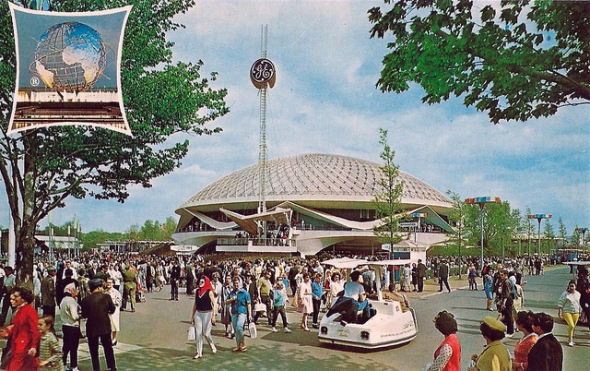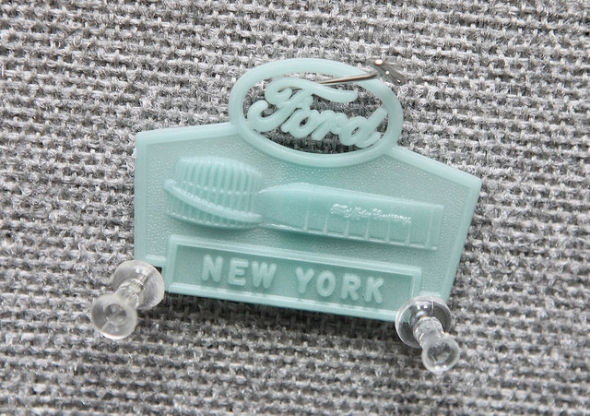Rent an Imagineer
Image: x-ray delta one, Flickr (license)
Disney had also learned something during the building of Disneyland. As he would later describe it, his illustrators and other Imagineers enjoyed transferring their ideas from paper and pencil to metallic fabrications. They could bring their visions of tomorrow to life. Thanks to Disneyland, the perception of Imagineers was that they were some of the finest inventers and builders of their era.
What does a corporation need to stand out at the World’s Fair? They need a pavilion that will draw in thousands of onlookers, providing a type of not-quite-free advertising that can translate to more customers and thereby more revenue. To whom would they turn to build such an engaging presentation? It’s the same answer as today. If you had the money to hire Elon Musk and his team to build something, you’d do it in a heartbeat. You’d also enjoy the celebrity of saying that you had the power to hire Musk. The same was true around 1960, when Disney started to send out employees of WED Enterprises for pitches. The WED team had earned respect across the world for their work in designing many of Disneyland’s attractions. Building something amazing from nothing was their special skillset.
Despite the overwhelming success of Disneyland and his continued dominance in the movie industry as well as the fledgling television market, he was still cash-poor, at least compared to what he wanted. Plans already existed for a new theme part on the other side of the Mississippi. Disney frequently lamented that the location of Disneyland meant that it was off-limits to 75 percent of the American population. While Walt Disney World wasn’t official yet, an East Coast version of Disneyland was in the planning stages.
Financing that goal left Disney cash-strapped enough that he was financially frugal. The World’s Fair afforded him an unprecedented opportunity. He could exchange the work of his vaunted team of Imagineers for big money from major corporations. They wanted to be in business with Disney as a brand, and Uncle Walt as an innovator and project manager. He wanted to take full advantage of cash-rich corporations by having them pay for his company’s next batch of theme park inventions. In a perfect world, he could even build attractions on someone else’s dime that he could then transport to Disneyland to use as new selling points for his beloved park. Uncle Walt was always quite the opportunist.
The first three sponsors
Image: France 1978, Flickr (license)
Everyone involved with the 1964 World’s Fair understood that there would be dozens of pavilions. Nobody knew exactly how many ahead of time, but the number proved to be roughly 140 of them stretched out across almost 650 acres of land. Everyone wanted to stand out from their corporate peers, but few of the people sponsoring pavilions had a specific plan to accomplish this.
Walt Disney gleefully predicted the madness of the situation while pitching his plan to his staff in 1960. He knew that people were about to come knocking at his door to build jaw-dropping pavilions. He explained the situation thusly, “They won't even know why they're doing it, except that other corporations are doing it, and they have to keep up with the Joneses." Uncle Walt understood people, and he appreciated the madness of corporate sponsorship. His company would entice other businesses to pay for the work of his Imagineers. And if everything broke the right way, Disney would wind up receiving most of the credit and respect rather than their patrons. If anything, the world continually underrates the business acumen Walt Disney displayed during his lifetime.
Image: Sam Howzit, Flickr (license)
A full four years prior to the World’s Fair, corporations were already jostling for position to acquire Disney Imagineers for their pavilions. There was a stiff pay-to-play price for their services. Not including parts and labor, these companies signed sponsorship deals with WED for a million dollars in exchange for a deliverable product. That’s the equivalent of $7.6 million today, which admittedly makes it sound less impressive. Million dollar contracts were few and far between in the early 1960s, though. The cost of doing business with Disney was hefty.
Two corporations quickly agreed to pay Disney for the services of WED. They were Ford Motor Company and General Electric. When Disney pitched another idea that would stand as a tribute to his home state of Illinois, Robert Moses, by then the President of the 1964 World’s Fair, loved the idea so much that he refused to “open the Fair without that exhibit!” Unfortunately, there wasn’t an obvious sponsor for Disney’s grand ideas. Eventually, Moses cajoled the Governor of Illinois to pay for this third Disney presentation.
A year away from the start of the exhibit, the company stood to make a splash with a trio of dazzling displays. And if you know enough about the 1964 World’s Fair to realize that a famous corporate sponsor is missing, there’s an explanation to that. A fourth corporation later begged Disney to perform a rush assignment, and their agreement fundamentally changed the course of theme parks.




Comments
I love this story, along worn many others on this site. I am only a little bothered that small world is treated as annoying. The world in a childlike state of peace an bliss is an amazing dream. What could be a better signature experience for Disney?
Excellent piece. Thank you.